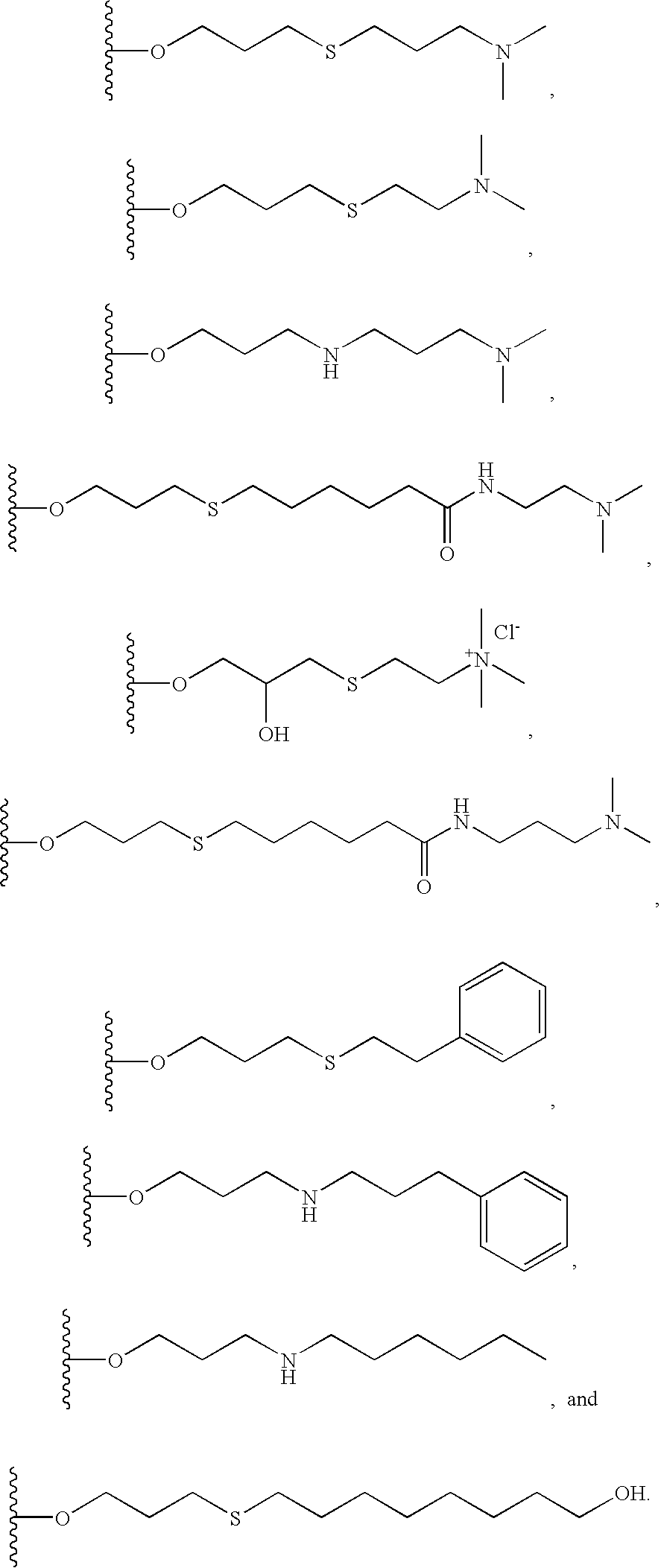Chromatographic material for the absorption of proteins at physiological ionic strength
a chromatographic material and protein technology, applied in the direction of adsorption purification/separation, anion exchangers, amphoteric ion exchangers, etc., can solve the problem of difficult to achieve the correct balance of ionic strength and ph to afford useful separation of sample molecules, and achieve the correct balance of ionic strength and ph. achieve the effect of strong electrostatic attraction, increase throughput and speed, and reinforce the strength of interactions
- Summary
- Abstract
- Description
- Claims
- Application Information
AI Technical Summary
Benefits of technology
Problems solved by technology
Method used
Image
Examples
example 1
Preparation of a Dimethylaminopropyl Thiol Derivative of Cellulose
[0126] 100 ml of cellulose beads were washed extensively with 1M sodium hydroxide solution and then with water until neutral pH was obtained. To the drained beads were added 18 ml of 0.5 M sodium hydroxide and 10 ml of allylbromide. The resultant mixture was then stirred vigorously overnight at room temperature.
[0127] The beads were washed with water to remove by-products, yielding allyl-cellulose for a substrate for the attachment of various functionalities.
[0128] The beads of allyl-cellulose were condensed with 25 g of dimethylaminopropylthiol to give the material as shown below:
[0129] The product resin exhibited a dimethylamino moiety density of 150 μmol / mL of resin. Binding capacity for bovine albumin at physiological ionic strength and pH 8.6 was 39 mg / mL.
example 2
Preparation of a Dimethylaminoethyl Thiol Derivative of Cellulose
[0130] 100 mL of allyl cellulose beads, obtained according to the protocol described above in example 1, were condensed with 25 g of dimethylaminoethylthiol to give the following material:
[0131] The product exhibited a dimethylamino moiety density of 87 μmol / mL of resin. The binding capacity for bovine albumin at physiological ionic strength and pH 8.6 was 21 mg / mL. The terminal dimethylamino moiety was quaternized by the addition of diethylaminoethyl chloride at pH 12 for 6 hours to give a derivative, which exhibited a binding capacity of the resin reached 27 mg of albumin per mL.
example 3
Coupling of Dimethylaminopropylamine to An Allylated Solid Support
[0132] 100 mL of allyl cellulose beads obtained according to the protocol described above in example 1 were condensed with 25 g of dimethylaminopropylamine to give the following material:
[0133] The product exhibited a dimethylamino moiety density of 126 μmol / mL of resin. The binding capacity for bovine albumin at physiological ionic strength and pH 8.6 was 38 mg / mL.
PUM
| Property | Measurement | Unit |
|---|---|---|
| pH | aaaaa | aaaaa |
| volume | aaaaa | aaaaa |
| volume | aaaaa | aaaaa |
Abstract
Description
Claims
Application Information
 Login to View More
Login to View More - R&D
- Intellectual Property
- Life Sciences
- Materials
- Tech Scout
- Unparalleled Data Quality
- Higher Quality Content
- 60% Fewer Hallucinations
Browse by: Latest US Patents, China's latest patents, Technical Efficacy Thesaurus, Application Domain, Technology Topic, Popular Technical Reports.
© 2025 PatSnap. All rights reserved.Legal|Privacy policy|Modern Slavery Act Transparency Statement|Sitemap|About US| Contact US: help@patsnap.com



